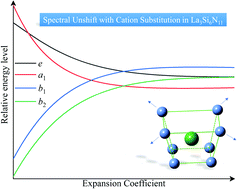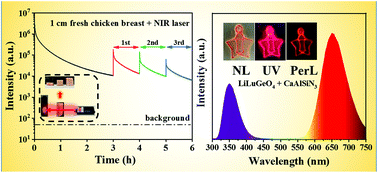Chem. Mater., 2019, 31, 15, 5788–5795. https://pubs.acs.org/doi/abs/10.1021/acs.chemmater.9b01864

Finding new low-dimensional metal halides with broad-band emission is attracting interest in single-component phosphor for white light-emitting diodes (WLEDs). The full-spectrum white light still remains a challenge as found in the two-dimensional hybrid material (C6H18N2O2)PbBr4 exhibiting the intrinsic free exciton (FE) and broad-band self-trap exciton (STE) emission upon 365 nm ultraviolet excitation, and a combined strategy has been proposed through doping the Mn2+ ions enabling a superposition of multiple emission centers toward the ultra-broad-band warm white light. The occupation of Mn2+ in (C6H18N2O2)PbBr4 has been discussed, and optical investigations verify that the warm white-light emission of Mn2+-doped (C6H18N2O2)PbBr4 originates from the coupling effects of the FE, STEs, and the 4T1–6A1 transition of the doped Mn2+. When the concentration of Mn2+ is 5%, the emission spectrum of the phosphor covers all visible-light areas with a full width at half maximum (FWHM) of about 230 nm. The high Ra (84.9) and warm light CCT (3577 K) values of the as-fabricated WLED lamp demonstrate that (C6H18N2O2)Pb1–xMnxBr4 can be promising as single-component white-light phosphor in solid-state lighting. Our work could provide a new understanding and perspective about hybrid metal halides for designing superior phosphor toward single-component white emission.








